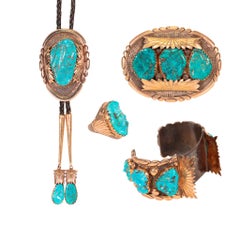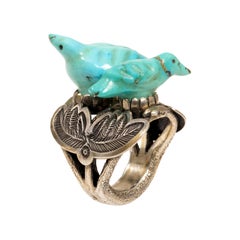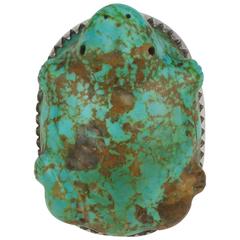Leekya Deyuse
Vintage 1950s American Native American More Jewelry
Turquoise, 14k Gold
Recent Sales
Vintage 1940s American Native American Cocktail Rings
Turquoise, Silver, Sterling Silver
Early 20th Century American Native American Native American Objects
Mid-20th Century American Native American Native American Objects
Stone
People Also Browsed
21st Century and Contemporary Stud Earrings
Yellow Diamond
2010s American Pendant Necklaces
Turquoise, Sterling Silver
1990s French Evening Dresses and Gowns
20th Century French Contemporary Engagement Rings
Diamond, Yellow Diamond, 18k Gold, Yellow Gold
21st Century and Contemporary Evening Dresses
21st Century and Contemporary Multi-Strand Necklaces
Diamond, Gold, 18k Gold
1990s European Enamel Frames and Objects
Gold, Enamel
21st Century and Contemporary Link Bracelets
Diamond, Ruby
21st Century and Contemporary Three-Stone Rings
Diamond
Vintage 1960s Pendant Necklaces
Diamond, Blue Sapphire, 18k Gold, White Gold, Platinum
Vintage 1950s American Native American More Necklaces
Amber, Sterling Silver
Antique 1890s Russian Russian Empire Enamel Frames and Objects
Rose Gold
Vintage 1930s Unknown Art Deco Choker Necklaces
Diamond, Platinum
Antique Late 19th Century Russian Victorian Enamel Frames and Objects
Yellow Gold
Vintage 1920s American Art Deco Link Bracelets
Diamond, Emerald, Onyx, Platinum
21st Century and Contemporary Modern Loose Gemstones
Yellow Diamond, Brown Diamond
A Close Look at Native-american Furniture
Native American broadly describes any Indigenous people in North America and encompasses hundreds of tribes and groups, all with distinct cultures. Native American–style furniture and decor likewise varies widely, from pieces created by Indigenous people to those appropriated by non-native designers.
Indigenous furniture’s rich heritage includes the bentwood boxes of the Northwest Coast carved from cedar for storing household or ceremonial objects. Generations of Native American people have made baskets for holding household items, with those in the Northeast using sweetgrass and those in the Southeast using pine needles and wicker. Artisans in the Plateau region wove watertight pieces like cradles from plant materials. Although these objects were intricately made, they were usually utilitarian rather than decorative.
The colonization of North America and the removal of Indigenous people from their lands led to the suppression of these practices. Many styles that used Native American motifs — such as Southwestern style, which was heavily influenced by the geometric patterns of Navajo textiles — have historically not involved Indigenous creators and, instead, have taken their traditions without their tribal context.
When decorating a home with Native American–style furniture, it is important to do so respectfully, by understanding the origins of motifs and objects and examining who profits from their sale. There are now Indigenous-led companies, such as Cherokee designer Cray Bauxmont-Flynn’s Amatoya and Totem House Design, promoting Indigenous work in furniture and home decor. Supporting Indigenous artists and artisans is essential to confronting the still pervasive issue of cultural appropriation in design.
Find a collection of Native American living room furniture, folk art, rugs and carpets, decorative objects and other items on 1stDibs.


